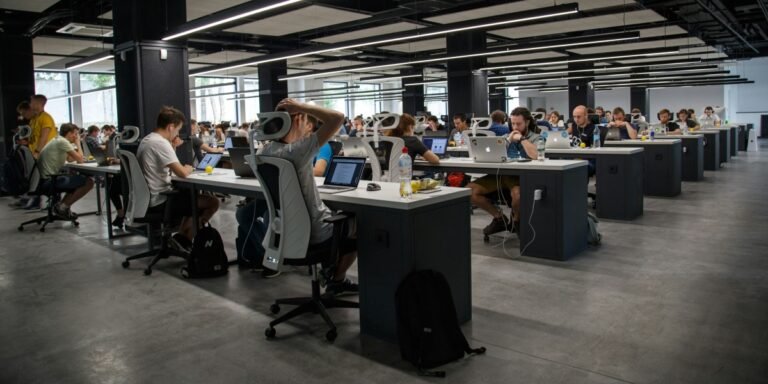AI-powered farming is rapidly reshaping how food is grown, offering new ways to address longstanding challenges in agriculture. This sophisticated technology moves farming beyond traditional methods, bringing precision, efficiency, and resilience to fields and operations. The integration of artificial intelligence into agricultural practices marks a significant shift, promising a more sustainable and productive future for food production worldwide. It’s like giving farmers a powerful toolkit, allowing them to make incredibly informed decisions and manage their resources with unprecedented accuracy.
Read also: The Growing Demand for Plant-Based Convenience Foods
How does AI improve farming practices?
AI-powered farming enhances agricultural practices by making them more data-driven and precise. Sensors, drones, and satellite imagery collect vast amounts of data on everything from soil composition and moisture levels to crop health and growth patterns. AI algorithms then analyze this data, providing farmers with actionable insights. This means a farmer can know exactly which part of a field needs more water or fertilizer, rather than applying inputs uniformly across an entire area. This precise application of resources reduces waste, lowers costs, and minimizes environmental impact.
Consider how this technology helps with crop monitoring. AI systems can identify subtle changes in plant color or texture, detecting signs of disease or pest infestations long before a human eye could. This early detection allows for targeted interventions, preventing widespread damage and reducing the need for broad-spectrum chemical treatments. Similarly, for smart irrigation, AI analyzes real-time weather data, soil moisture readings, and crop-specific water needs to determine optimal watering schedules and quantities. This leads to substantial water savings, a critical benefit in regions facing water scarcity.
What role do autonomous machines play in AI-powered farming?

Photo Credit: Unsplash.com
Autonomous machines are becoming an increasingly common sight in AI-powered farming, significantly changing the nature of farm labor. These machines, including autonomous tractors, drones, and robotic harvesters, operate with minimal human intervention, performing tasks with remarkable precision and efficiency.
Autonomous tractors, for example, can plow, plant, and cultivate fields by themselves, following pre-programmed routes and adjusting their operations based on real-time data. This capability not only addresses labor shortages, a growing concern in many agricultural regions, but also ensures consistency and reduces human error. Drones equipped with AI and specialized cameras can survey vast fields quickly, collecting detailed imagery that AI then processes to create high-resolution maps of crop health, nutrient deficiencies, or pest hot spots. This allows for highly localized treatments, again minimizing the use of chemicals.
Robots are also taking on delicate tasks like fruit picking, where their computer vision and robotic arms can identify ripe produce and harvest it gently, reducing spoilage and maximizing yield. These advancements in agricultural robotics lead to significant operational cost reductions and improve overall farm productivity, moving towards a more automated and precise agricultural operation.
How is AI transforming crop protection and resource management?
AI-powered farming is fundamentally changing how crop protection and resource management are approached, shifting from broad applications to highly targeted strategies. This transformation is crucial for both environmental sustainability and economic efficiency.
Instead of applying pesticides uniformly, AI-driven systems, like those found on smart spraying equipment, use computer vision to identify weeds and pests with high accuracy. The system then directs a precise spray only where it’s needed, drastically reducing herbicide and pesticide use. Some advanced systems even use lasers to eliminate weeds, avoiding chemicals altogether. This precision application minimizes chemical runoff into water sources and reduces exposure for farm workers, contributing to healthier ecosystems.
For resource management, AI optimizes inputs such as fertilizers and water. By analyzing soil data, weather forecasts, and specific crop requirements, AI algorithms create detailed maps that guide variable rate application. This means different sections of a field receive only the exact amount of nutrients or water they require. A farmer can conserve resources significantly. For instance, some reports indicate a substantial reduction in water usage when AI is employed for irrigation, helping farmers manage water more effectively in drier climates. This intelligent resource allocation ensures crops receive what they need to thrive while avoiding wasteful excess.
What are the economic and environmental benefits of AI-powered farming?
AI-powered farming brings considerable economic and environmental advantages, making agricultural operations more sustainable and profitable. Economically, the increase in yield prediction accuracy helps farmers plan better, reducing overproduction or shortages. AI-powered models, trained on historical data, weather patterns, and satellite imagery, can forecast yields with greater precision, allowing farmers to align their production with market demand. This results in better pricing for their produce and less post-harvest waste.
The reduction in input costs is another major economic benefit. By optimizing the use of water, fertilizers, and pesticides, AI helps farmers save money on these expensive resources. Precision application means less goes to waste, directly impacting the farmer’s bottom line. The automation provided by AI-driven machinery also reduces labor costs, a significant expenditure for many farming operations.
Environmentally, AI-powered farming leads to a smaller ecological footprint. The reduced use of chemicals protects soil health and water quality, preventing pollution. Lower water consumption helps conserve this vital resource, especially important in drought-prone areas. Furthermore, by improving efficiency, AI helps agriculture become more resilient to climate variations and contributes to sustainable food systems by minimizing waste and resource depletion. This combination of economic viability and environmental responsibility positions AI-powered farming as a key component of future sustainable agriculture.
Read also: The Excitement Around the Bella Organic Haunted Corn Maze
How is AI making advanced farming accessible to more people?

Photo Credit: Unsplash.com
AI-powered farming is increasingly making advanced agricultural techniques accessible to a broader range of farmers, including smallholder farmers in developing regions. This democratization of technology is crucial for improving food security and empowering communities.
One key development is the proliferation of user-friendly, AI-powered mobile applications. These apps allow farmers to use their smartphones to diagnose plant diseases by simply taking a photo, receive tailored recommendations for crop management, or get real-time weather forecasts specific to their location. Many of these applications are designed to work offline or with limited internet connectivity, addressing infrastructure challenges in remote areas.
Beyond mobile apps, AI-driven advisory platforms provide agronomic guidance, helping farmers make informed decisions about planting schedules, fertilizer application, and pest control, all tailored to their specific field conditions and local climate. This direct access to expert knowledge, previously available only to larger, more resource-rich operations, helps smallholder farmers optimize their practices, reduce risks, and ultimately increase their yields and income stability. It bridges the gap between traditional farming wisdom and modern data science, making sophisticated tools understandable and practical for everyday use on farms of all sizes.









